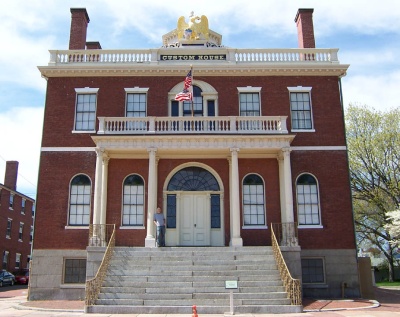Mark Dominus (陶敏修)
mjd@pobox.com

Archive:
| 2025: | JFMAMJ |
| JAS | |
| 2024: | JFMAMJ |
| JASOND | |
| 2023: | JFMAMJ |
| JASOND | |
| 2022: | JFMAMJ |
| JASOND | |
| 2021: | JFMAMJ |
| JASOND | |
| 2020: | JFMAMJ |
| JASOND | |
| 2019: | JFMAMJ |
| JASOND | |
| 2018: | JFMAMJ |
| JASOND | |
| 2017: | JFMAMJ |
| JASOND | |
| 2016: | JFMAMJ |
| JASOND | |
| 2015: | JFMAMJ |
| JASOND | |
| 2014: | JFMAMJ |
| JASOND | |
| 2013: | JFMAMJ |
| JASOND | |
| 2012: | JFMAMJ |
| JASOND | |
| 2011: | JFMAMJ |
| JASOND | |
| 2010: | JFMAMJ |
| JASOND | |
| 2009: | JFMAMJ |
| JASOND | |
| 2008: | JFMAMJ |
| JASOND | |
| 2007: | JFMAMJ |
| JASOND | |
| 2006: | JFMAMJ |
| JASOND | |
| 2005: | OND |
Subtopics:
| Mathematics | 245 |
| Programming | 99 |
| Language | 95 |
| Miscellaneous | 75 |
| Book | 50 |
| Tech | 49 |
| Etymology | 35 |
| Haskell | 33 |
| Oops | 30 |
| Unix | 27 |
| Cosmic Call | 25 |
| Math SE | 25 |
| Law | 22 |
| Physics | 21 |
| Perl | 17 |
| Biology | 16 |
| Brain | 15 |
| Calendar | 15 |
| Food | 15 |
Comments disabled
Wed, 20 Dec 2006
Reader's disease
Reader's disease is an occupational hazard of editors and literary
critics. Critics are always looking for the hidden meaning, the
clever symbol, and, since they are always looking for it, they always
find it, whether it was there or not. (Discordians will recognize
this as a special case of the law of fives.) Sometimes the
critics are brilliant, and find hidden meanings that are undoubtedly
there even though the author was unaware of them; more often, they are
less fortunate, and sometimes they even make fools of themselves.
The idea of reader's disease was introduced to me by professor David Porush, who illustrated it with the following anecdote. Nathaniel Hawthorne's The Scarlet Letter is prefaced by an introduction called The Custom-House, in which the narrator claims to have found documentation of Hester Prynne's story in the custom house where he works. The story itself is Hawthorne's fantasy, but the custom house is not; Hawthorne did indeed work in a custom house for many years.
Porush's anecdote concerned Mary Rudge, the daughter of Ezra Pound. Rudge, reading the preface of The Scarlet Letter, had a brilliant insight: the custom house, like so many other buildings of the era, was a frame house and was built in the shape of the letter "A". It therefore stands as a physical example of the eponymous letter.
Rudge was visiting Porush in the United States, and told him about her discovery.
"That's a great theory," said Porush, "But it doesn't look anything like a letter 'A'."
Rudge argued the point.
"Mary," said Porush, "I've seen it. It's a box."
Rudge would not be persuaded, so together they got in Porush's car and drove to Salem, Massachusetts, where the custom house itself still stands.
But Rudge, so enamored of her theory that she could not abandon it, concluded that some alternative explanation must be true: the old custom house had burnt down and been rebuilt, or the one in the book was not based on the real one that Hawthorne had worked in, or Porush had led her to the wrong building.
But anyway, all that is just to introduce my real point, which is to relate one of the most astounding examples of reader's disease I have ever encountered personally. The Mary Rudge story is secondhand; for all I know Porush made it up, or exaggerated, or I got the details wrong. But this example I am about to show you is in print, and is widely available.
I have a nice book called The Treasury of the Encyclopædia Britannica, which is a large and delightful collection of excerpts from past editions of the Britannica, edited by Clifton Fadiman. This is out of print now, but it was published in 1992 and is easy to come by.
Each extract is accompanied by some introductory remarks by Fadiman and sometimes by one of the contributing editors. One long section in the book concerns early articles about human flight; in the Second Edition (published 1778-1783) there was an article on "Flying" by then editor James Tytler. Contributing editor Bruce L. Felknor's remarks include the following puzzled query:
What did Tytler mean by his interjection of "Fa" after Friar Bacon's famous and fanciful claim that man had already succeeded in flying? It hardly seems a credulous endorsement, an attitude sometimes attributed to Tytler.
Fadiman adds his own comment on this:
As for Tytler's "Fa": Could it have been an earlier version of our "Faugh!"? In any case we suddenly hear an unashamed human voice.
Gosh, what could Tytler have meant by this curious interjection? A credulous endorsement? An exclamation of disgust? An unedited utterance of the unashamed human voice? Let's have a look:
The secret consisted in a couple of large thin hollow copper-globes exhausted of air; which being much lighter than air, would sustain a chair, whereon a person might sit. Fa. Francisco Lana, in his Prodromo, proposes the same thing...
Felknor and Fadiman have mistaken "Fa" for a complete sentence. But it is apparently an abbreviation of Father Francisco Lana's ecclesiastical title.
Oops.
[Other articles in category /book] permanent link



